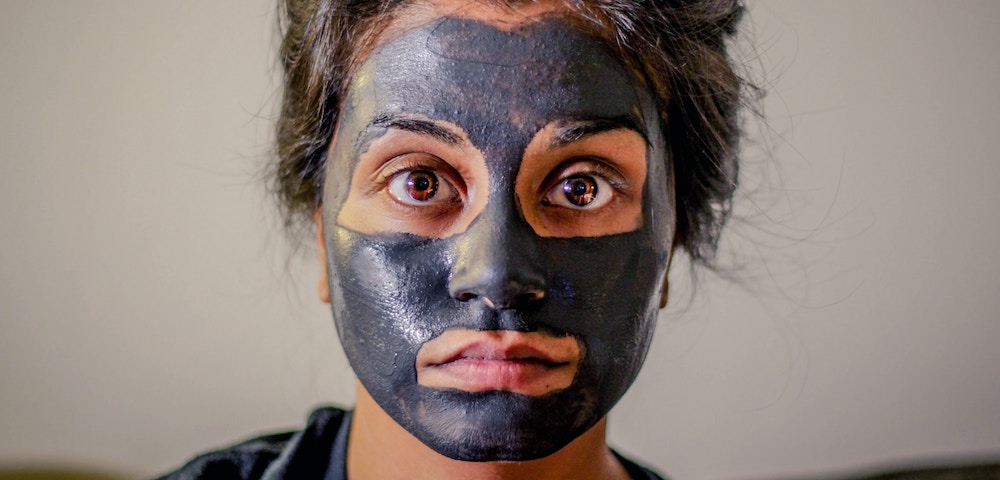
Preteen skincare, minus the TikTok hype: Real advice from local dermatologists
Photo above by Chris Knight via Unsplash.
If you grew up in the ’80s or ’90s, you probably remember the commercials for products that promised clear skin for the masses, thanks to preteen and teen skincare products. In these ads, teens scoured their faces with acidic cotton pads (which caused more irritation than anything else), dabbed pimple cream on spots that needed to disappear before the “big dance,” and were constantly splashing gallons of clear water all over their faces (and, presumably, their bathrooms). All this so they could cheerfully clear away all traces of oil and bacteria.
There always seemed to be another product promising to help us get rid of these teenage curses.
Now we know a little better. But guiding our pre-teens through the beginnings of their facial care routines might still feel like something we’re not quite ready for. Instead of commercials, our kids have social media influencers who are peddling everything from pimple patches to at-home dermaplaning tools that tweens and teens can order with the click of a button.
To cut through the hype, we reached out to Pittsburgh dermatologists Douglas Kress, M.D., and Kristen Whitney, D.O., who offered lots of practical tips for managing preteen skin. Above all, they urge us to embrace simplicity when it comes to pre-teens and skin care.
“Your daily skin care routine does not need to be complicated; but rather simplicity and consistency is key,” said Dr. Whitney.
SIMPLE STEPS
“The basic advice I offer is to keep it as simple as possible,” said Dr. Kress. “I recommend washing the face 1-2 times per day with something mild.” He recommends Cetaphil Gentle Skin Cleanser or Cerave Foaming Facial Cleanser. Dr. Whitney added that tweens with normal, dry, and eczema-prone skin types should use a hydrating cleanser, while those with oily skin should choose a foaming cleanser, or one with salicylic acid or benzoyl peroxide.
Before bed, she recommends a non-comedogenic, oil-free facial moisturizer.
Nothing is totally effortless with tweens, but teaching them to wash twice a day and moisturize at night seems relatively straightforward — dare we say, achievable. Dr. Whitney would add one additional step: the use of a daily sunscreen.
Dr. Whitney says this is her most important suggestion. “Sun damage is cumulative over the course of a person’s life, and having just five sunburns doubles your risk for developing melanoma – a potentially deadly form of skin cancer,” she said.
She recommended a mineral-based sunscreen when going outdoors to keep skin damage – and cancer risk – at a minimum.
PIGMENTATION PRIORITIES
We also asked whether there were considerations Black preteens and teens might make in their skin care. While much of the advice remains the same for all kids, Dr. Whitney said there are a few things she advises for patients with darker skin.
Black preteens “are more prone to hyperpigmentation (dark spots) on the facial skin which can occur from healing acne, trauma to the skin or other inflammatory conditions,” she said. “Topicals may be added to treatment regimens to combat these issues or prevent them from occurring.”
Dr. Whitney also cautioned against deciding on more intensive procedures without advice from a doctor. Teens and preteens may see online videos about procedures and believe the advice they hear from non-professionals. But it’s important to see a doctor before trying these approaches.
“Some procedures such as chemical peels and laser treatments can be too aggressive for dark skin with an increased risk of hyperpigmentation and scarring,” she says.
She recommends talking with a physician who can recommend safer routes.
NUTRITION KNOWLEDGE
If you’ve got a tween who’s keen on certain foods — maybe sugary drinks, or all of the selections from the cheese aisle — you might be wondering: What about nutrition? Most of us have been taught that nutrition plays a role in managing things like acne, whether we’ve been taught to avoid chocolate or to give up cheese or anything in between.
Each dermatologist had a different perspective on nutrition.
Dr. Whitney found some nutritional choices worth considering.
“Multiple factors can impact the formation of acne such as genetics, hormones, medications, environment and diet. Research has shown that high glycemic foods (foods high in sugars) may increase acne breakouts,” she said. “In addition, dairy products, specifically those containing whey proteins and casein, may also contribute to acne development. Lastly, there is evidence showing patients with acne can benefit from a diet consisting regularly of fish and healthy oils rich in omega-3 fatty acids.”
Dr. Kress said that typical American eating habits make it difficult to achieve noticeable skin improvement through a change in diet alone. It’s always valuable to eat healthier foods. But if a preteen is beginning to struggle with acne, a shift in diet alone — unless it’s a truly dramatic one — isn’t likely to solve the problem.
Eliminating all sugar can be difficult, Dr. Kress says, given how many typical American foods and drinks it appears in: “As far as sugar is concerned, in order to impact acne, the glycemic index you would need to achieve is so low it is almost not obtainable in the U.S. You would need to buy all of your food raw at Whole Foods, cook it yourself at home, never eat out, eat at a friend’s or have your child eat anything at school.”
WHAT ELSE CAN PRETEENS DO?
Are there any simple habits that, in conjunction to a simple skin care routine, could help our tweens set the foundation for lifelong skin care habits? Drs. Whitney and Kress left us with this list of easy-and-effective practices:
- Avoid cosmetics that cause breakouts; opt for oil-free, non-comedogenic makeup.
- Wash makeup brushes weekly, as dirty brushes can lead to acne breakouts and rashes.
- Always remove makeup before bed, as sleeping with makeup on the skin can lead to skin irritation and a duller complexion in addition to breakouts.
- For acne- and eczema-prone skin, choose silk pillowcases, which are more gentle than cotton.
- Wash pillowcases weekly.
- Be aware that some hair care products (including shampoos, conditioners, pomades and other styling products) can cause breakouts if they contain oil. The oil can clog pores along the hairline, forehead, neck and upper back which may lead to acne. If you get breakouts in these areas, switch to products labeled as oil-free, non-comedogenic.










